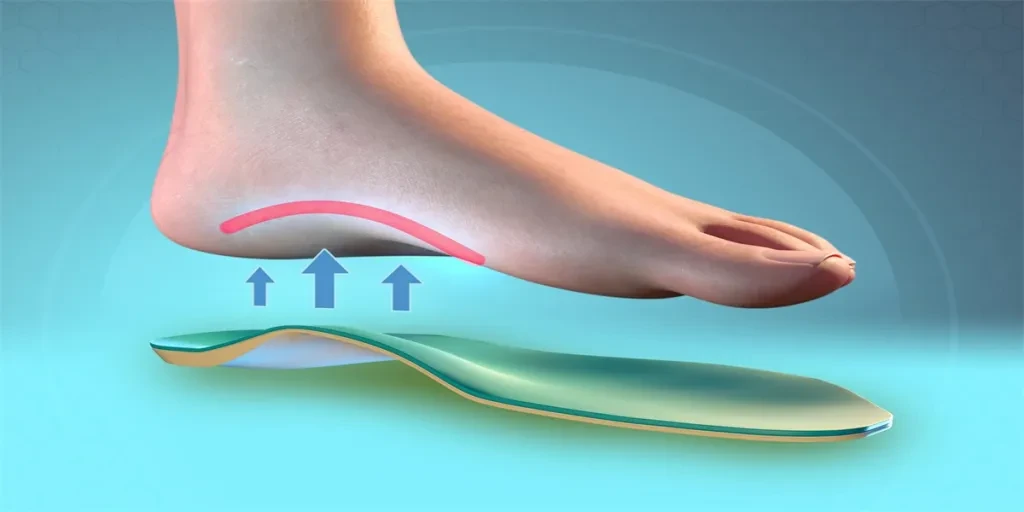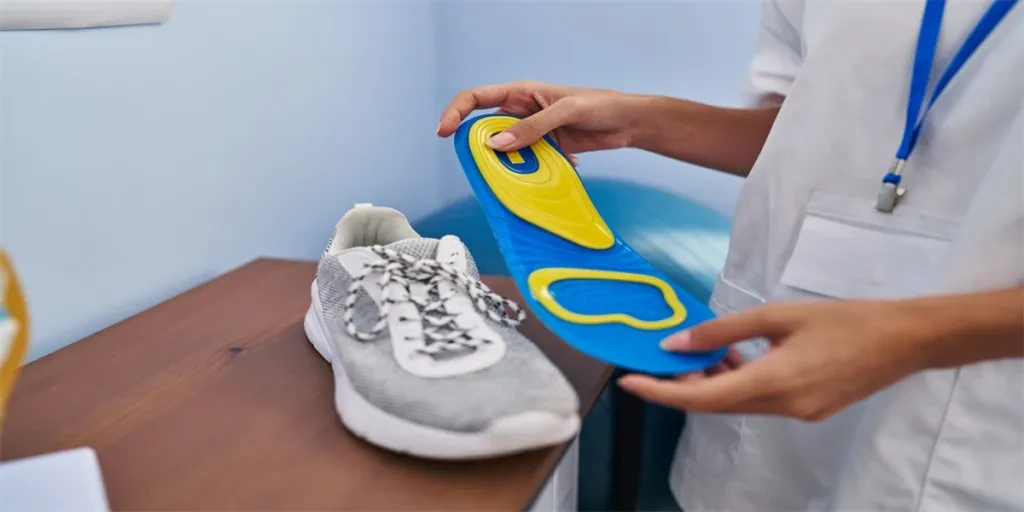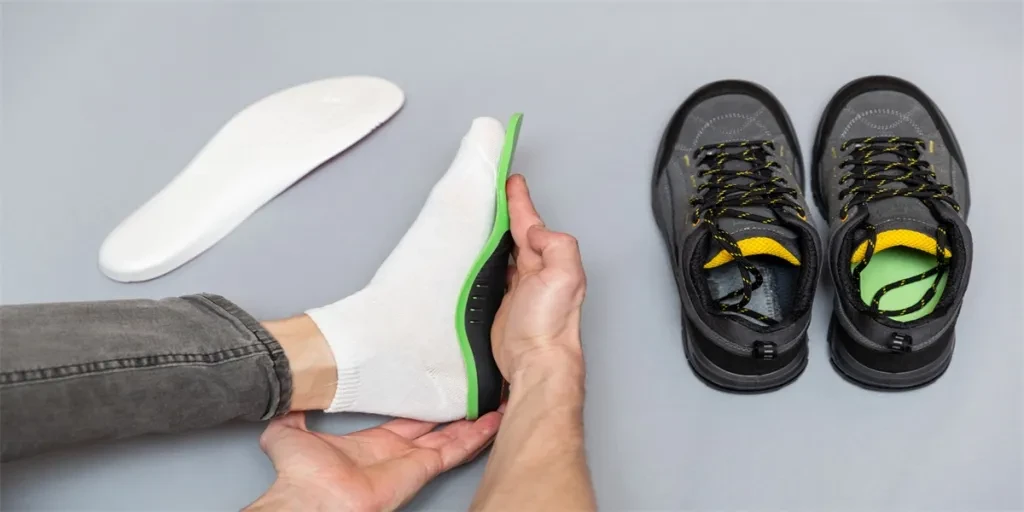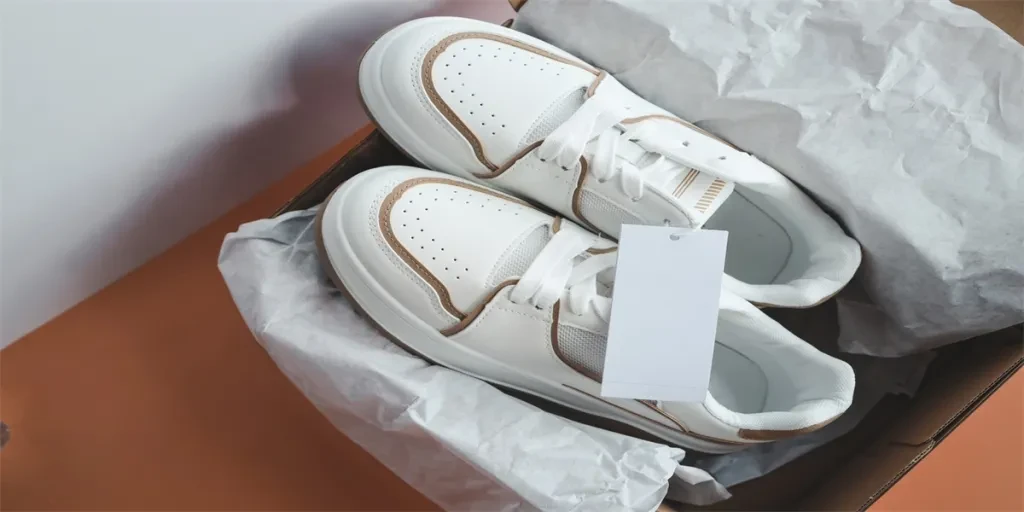التهاب اللفافة الأخمصية، وهو سبب شائع لألم الكعب، يؤثر على ملايين الأشخاص في جميع أنحاء العالم. ومع تزايد الوعي بهذه الحالة، يتزايد الطلب على الأحذية المتخصصة المصممة لتخفيف أعراضها. تتعمق هذه المقالة في اتجاهات السوق والجهات الفاعلة الرئيسية والرؤى الإقليمية لصناعة أحذية التهاب اللفافة الأخمصية، مما يوفر نظرة عامة شاملة للشركات والمستهلكين على حد سواء.
جدول المحتويات:
- نظرة عامة على السوق
- مواد وتصميمات مبتكرة
- الراحة والوظائف
- المتانة والجودة
نظرة عامة حول السوق

الطلب المتزايد على أحذية التهاب اللفافة الأخمصية
كان الطلب على أحذية التهاب اللفافة الأخمصية في ارتفاع مطرد، مدفوعًا بالوعي المتزايد بصحة القدم وانتشار الاضطرابات المرتبطة بالقدم. وفقًا لتقرير صادر عن Research and Markets، نمت سوق النعال التقويمية للقدم العالمية، والتي تشمل المنتجات المصممة لالتهاب اللفافة الأخمصية، من 3.35 مليار دولار أمريكي في عام 2023 إلى 3.58 مليار دولار أمريكي في عام 2024. ومن المتوقع أن تستمر في النمو بمعدل نمو سنوي مركب (CAGR) يبلغ 6.91٪، لتصل إلى 5.36 مليار دولار أمريكي بحلول عام 2030. ويتغذى هذا النمو على الانتشار المتزايد لحالات مثل التهاب اللفافة الأخمصية والقدم المسطحة والانقلاب المفرط للداخل، مما يستلزم استخدام الأحذية التصحيحية.
اللاعبون الرئيسيون في السوق
تتسم سوق الأحذية المخصصة لعلاج التهاب اللفافة الأخمصية بالتنافسية الشديدة، حيث يتولى العديد من اللاعبين الرئيسيين زمام المبادرة في مجال الابتكار وحصة السوق. وتتصدر شركات مثل Aetrex Inc. وBauerfeind AG وSuperfeet Worldwide Inc. الصدارة، حيث تقدم مجموعة من المنتجات المصممة لتوفير الراحة والدعم للأفراد الذين يعانون من التهاب اللفافة الأخمصية. وتشتهر هذه الشركات بالتزامها بالجودة، ودمج التقنيات والمواد المتقدمة لتعزيز راحة وفعالية أحذيتها.
على سبيل المثال، تشتهر شركة Aetrex Inc. بنعالها وأحذيتها التقويمية التي تجمع بين التكنولوجيا المتطورة والتصميمات الأنيقة. وتشتهر شركة Bauerfeind AG الألمانية بمنتجاتها التقويمية الطبية التي توفر دعمًا فائقًا وتخفيفًا للألم. كما تعد شركة Superfeet Worldwide Inc. من الشركات الكبرى الأخرى، وهي معروفة بنعالها المصممة خصيصًا والتي تلبي مجموعة واسعة من حالات القدم، بما في ذلك التهاب اللفافة الأخمصية.
رؤى السوق الإقليمية
يختلف سوق أحذية التهاب اللفافة الأخمصية بشكل كبير عبر المناطق المختلفة، ويتأثر بعوامل مثل البنية التحتية للرعاية الصحية، ووعي المستهلك، والظروف الاقتصادية. في الأمريكتين، ينشأ الطلب بسبب تزايد عدد السكان المسنين وزيادة الإنفاق على الرعاية الصحية. يساهم توافر حلول تقويم العظام المتقدمة والانتشار الواسع للاضطرابات المرتبطة بالقدم في النمو القوي للسوق في هذه المنطقة.
في منطقة أوروبا والشرق الأوسط وأفريقيا، تعززت السوق بفضل البنية التحتية القوية للرعاية الصحية وعدد متزايد من كبار السن. وتعاني الدول الأوروبية على وجه الخصوص من ارتفاع معدل الإصابة بالأمراض المزمنة التي تؤثر على صحة القدم، مما يزيد الطلب على الأحذية المتخصصة. ورغم أن منطقة الشرق الأوسط وأفريقيا ليست متقدمة مثل أوروبا، إلا أنها تقدم فرص نمو بسبب التوسع السكاني وزيادة الإنفاق على الرعاية الصحية.
تشهد منطقة آسيا والمحيط الهادئ نموًا سريعًا في سوق أحذية التهاب اللفافة الأخمصية، مدفوعًا بارتفاع الدخول المتاحة، وتغير أنماط الحياة، وشيخوخة السكان. كما تساهم زيادة الوعي بصحة القدم وفوائد الحلول التقويمية في توسيع السوق. بالإضافة إلى ذلك، من المتوقع أن يؤدي الاتجاه المتزايد لاستخدام النعال التقويمية الرياضية لتحسين الأداء والوقاية من الإصابات إلى زيادة الطلب في هذه المنطقة.
مواد وتصميمات مبتكرة

تقنيات التوسيد المتقدمة
شهدت الأحذية المصممة لالتهاب اللفافة الأخمصية تقدمًا كبيرًا في تقنيات التبطين. هذه الابتكارات ضرورية لأنها توفر الدعم والراحة اللازمين لتخفيف الألم المرتبط بهذه الحالة. وفقًا لتقرير احترافي، أصبح استخدام مواد مثل EVA (أسيتات فينيل الإيثيلين) وPU (البولي يوريثين) في النعال الوسطى أمرًا شائعًا. تشتهر هذه المواد بخصائص امتصاص الصدمات الممتازة، مما يساعد في تقليل التأثير على الكعب وقوس القدم. بالإضافة إلى ذلك، قامت بعض العلامات التجارية بدمج أنظمة التبطين القائمة على الجل والتي توفر دعمًا مستهدفًا لمنطقة الكعب، مما يعزز الراحة ويقلل الألم.
مواد قابلة للتنفس وخفيفة الوزن
تعتبر التهوية وخفة الوزن من السمات الأساسية في الأحذية المخصصة لمرضى التهاب اللفافة الأخمصية. تساعد الأحذية التي تحتوي على شبكة علوية أو مواد أخرى قابلة للتنفس في الحفاظ على بيئة مريحة للقدم من خلال السماح بدوران الهواء. وهذا مهم بشكل خاص للأفراد الذين يقفون على أقدامهم لفترات طويلة. تعمل المواد خفيفة الوزن، مثل الأقمشة الاصطناعية والبوليمرات المتقدمة، على تقليل الوزن الإجمالي للحذاء، مما يجعل من السهل ارتداؤه لفترات طويلة دون التسبب في إجهاد إضافي للقدمين.
تصميمات مريحة وداعمة
يلعب التصميم المريح دورًا محوريًا في فعالية الأحذية في علاج التهاب اللفافة الأخمصية. تركز هذه التصميمات على توفير الدعم الأمثل للبنية الطبيعية للقدم، وخاصة القوس والكعب. تساعد الأحذية ذات النعال المحددة وأنظمة دعم القوس في توزيع الضغط بالتساوي على القدم، مما يقلل من الضغط على اللفافة الأخمصية. بالإضافة إلى ذلك، توفر ميزات مثل أكواب الكعب العميقة وكعب ثابت الثبات وتمنع حركة القدم المفرطة، والتي يمكن أن تؤدي إلى تفاقم أعراض التهاب اللفافة الأخمصية.
الراحة والأداء الوظيفي

دعم القوس المحسن
يعد دعم القوس مكونًا أساسيًا في الأحذية المصممة لالتهاب اللفافة الأخمصية. يساعد دعم القوس المناسب في الحفاظ على محاذاة القدم الطبيعية ويقلل من الضغط على اللفافة الأخمصية. يوصى بشدة بالأحذية ذات دعم القوس المدمج أو خيار إدخال تقويم العظام المخصص للأفراد الذين يعانون من هذه الحالة. يتم تصميم تقويم العظام المخصص، على وجه الخصوص، وفقًا للاحتياجات المحددة لمرتديه، مما يوفر الدعم والراحة الشخصية.
ميزات امتصاص الصدمات
يعد امتصاص الصدمات بشكل فعال أمرًا ضروريًا للتخفيف من قوى التأثير التي تساهم في آلام التهاب اللفافة الأخمصية. تساعد الأحذية ذات ميزات امتصاص الصدمات المتقدمة، مثل النعال الداخلية والأوسط المبطنة، في تشتيت قوى التأثير التي تحدث أثناء المشي أو الجري. تُستخدم مواد مثل الجل والرغوة وأنظمة التوسيد الهوائية بشكل شائع لتعزيز امتصاص الصدمات. لا توفر هذه الميزات راحة فورية من الألم فحسب، بل تساعد أيضًا في منع المزيد من الضرر لللفافة الأخمصية.
خيارات ملائمة قابلة للتخصيص
تعد خيارات المقاسات القابلة للتخصيص جانبًا مهمًا آخر من جوانب الأحذية المخصصة لمرضى التهاب اللفافة الأخمصية. تسمح الأحذية التي توفر ميزات قابلة للتعديل، مثل الأربطة أو الأشرطة أو إغلاقات الفيلكرو، بملاءمة أكثر تخصيصًا. وهذا مفيد بشكل خاص للأفراد الذين لديهم أشكال وأحجام أقدام مختلفة. يساعد المقاس المحكم والآمن في الحفاظ على محاذاة القدم بشكل صحيح ويمنع الحركة غير الضرورية داخل الحذاء، والتي يمكن أن تؤدي إلى تفاقم أعراض التهاب اللفافة الأخمصية. بالإضافة إلى ذلك، تأتي بعض الأحذية بنعل داخلي قابل للإزالة، مما يسمح لمرتديها باستبدالها بنعال تقويمية مخصصة لمزيد من الدعم. وفقًا لمصادر مختلفة، فإن خيارات المقاسات القابلة للتخصيص عززت بشكل كبير من راحة وفعالية الأحذية المخصصة لمرضى التهاب اللفافة الأخمصية.
المتانة والجودة

بناء طويل الأمد
تعتبر المتانة من الاعتبارات الرئيسية في الأحذية المخصصة لمرضى التهاب اللفافة الأخمصية، حيث يجب أن توفر هذه الأحذية الدعم والراحة بشكل مستمر بمرور الوقت. تساهم مواد البناء عالية الجودة، مثل الجلود المتينة والأقمشة الاصطناعية والخياطة المعززة، في إطالة عمر الحذاء. تضمن الأحذية المصممة لتحمل التآكل والتلف اليومي أن يستمر مرتديها في تلقي الدعم اللازم دون الحاجة إلى استبدالها بشكل متكرر.
مواد عالية الجودة
يعد استخدام مواد عالية الجودة أمرًا ضروريًا في تصنيع الأحذية المخصصة لمرضى التهاب اللفافة الأخمصية. توفر المواد الفاخرة، مثل الجلد المحبب بالكامل والرغوة عالية الكثافة والأقمشة الاصطناعية المتقدمة، راحة فائقة ودعمًا ومتانة. تم تصميم هذه المواد لتحمل قسوة الاستخدام اليومي مع الحفاظ على سلامتها البنيوية. بالإضافة إلى ذلك، غالبًا ما توفر المواد عالية الجودة نفاذية أفضل للرطوبة، مما يعزز صحة القدم بشكل عام. وفقًا لمصادر مختلفة، فإن الأحذية المصنوعة من مواد عالية الجودة أكثر فعالية في إدارة أعراض التهاب اللفافة الأخمصية وتوفر تجربة ارتداء أكثر راحة.
خلاصة
لقد أدى التقدم في المواد والتصميم والتكنولوجيا إلى تحسين فعالية الأحذية بشكل كبير في علاج التهاب اللفافة الأخمصية. من أنظمة التبطين المتقدمة والمواد القابلة للتنفس إلى التصميمات المريحة وخيارات المقاس القابلة للتخصيص، تقدم هذه الأحذية حلاً شاملاً لإدارة أعراض التهاب اللفافة الأخمصية. ومع استمرار الصناعة في الابتكار، يبدو المستقبل واعدًا للأفراد الذين يسعون إلى التخلص من هذه الحالة. يضمن الاستثمار في الأحذية عالية الجودة والمتينة من العلامات التجارية المرموقة الراحة والدعم على المدى الطويل، مما يجعل من الممكن أن تعيش أسلوب حياة نشطًا وخاليًا من الألم.





 Afrikaans
Afrikaans አማርኛ
አማርኛ العربية
العربية বাংলা
বাংলা Nederlands
Nederlands English
English Français
Français Deutsch
Deutsch हिन्दी
हिन्दी Bahasa Indonesia
Bahasa Indonesia Italiano
Italiano 日本語
日本語 한국어
한국어 Bahasa Melayu
Bahasa Melayu മലയാളം
മലയാളം پښتو
پښتو فارسی
فارسی Polski
Polski Português
Português Русский
Русский Español
Español Kiswahili
Kiswahili ไทย
ไทย Türkçe
Türkçe اردو
اردو Tiếng Việt
Tiếng Việt isiXhosa
isiXhosa Zulu
Zulu